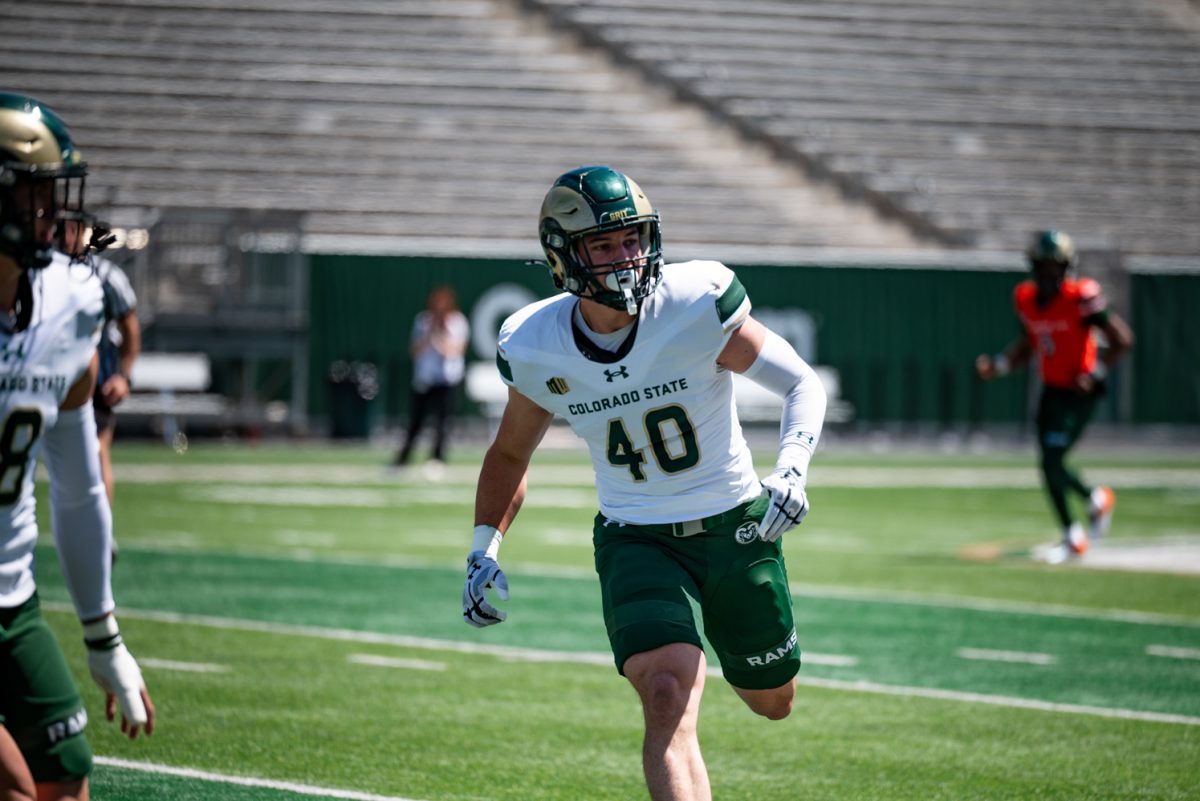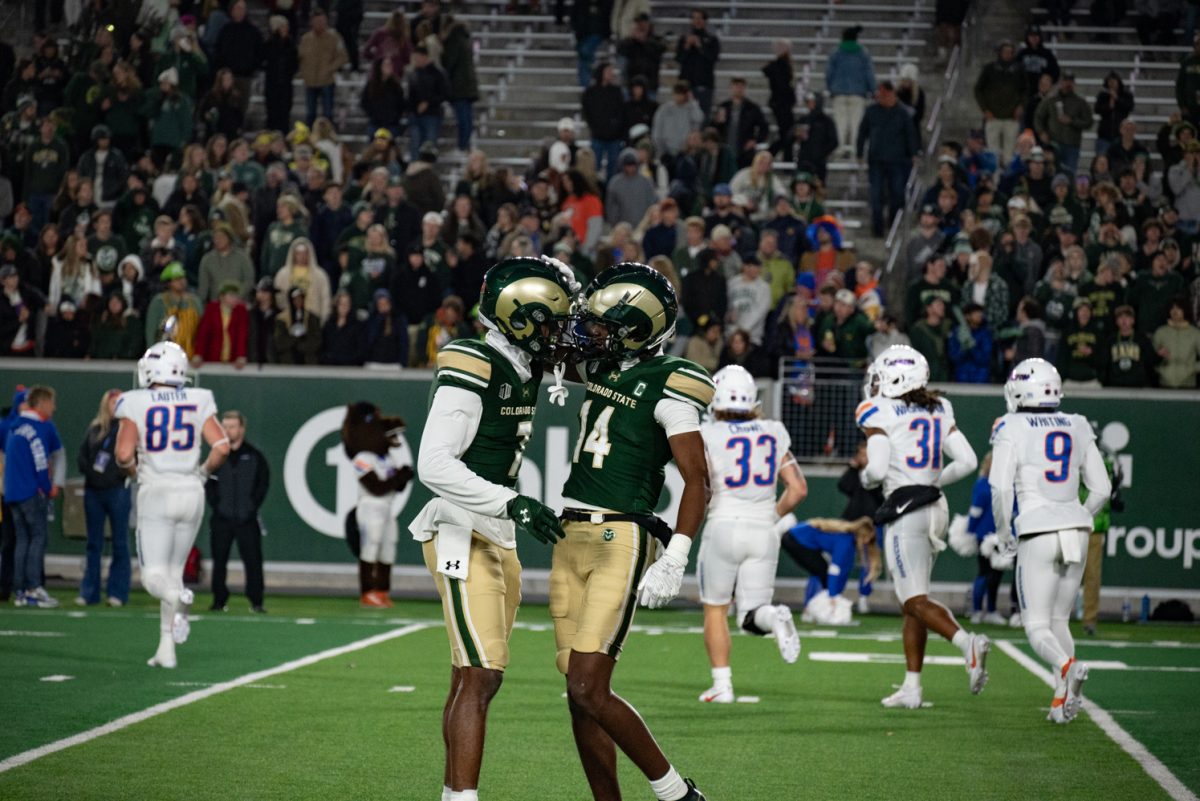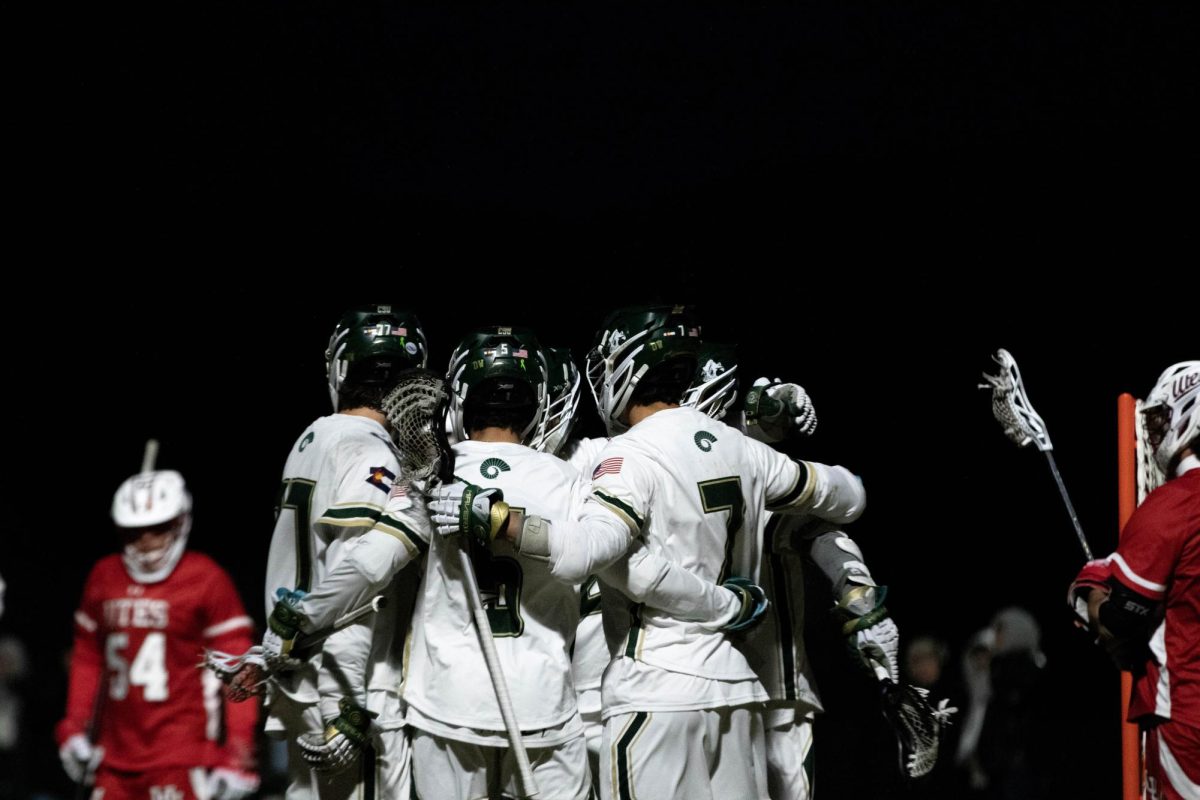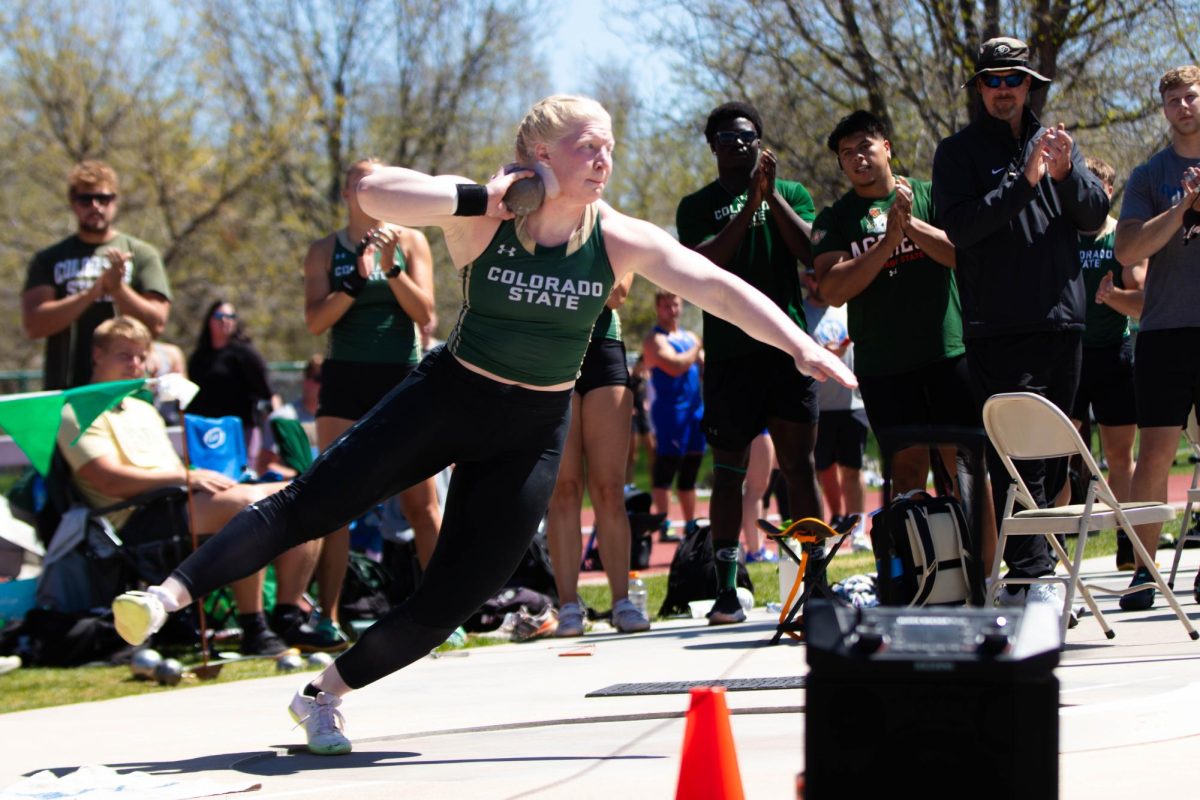When Minnesota Golden Gophers’ senior associate athletics director Marc Ryan walks past TCF Bank Stadium on the University’s campus in Minneapolis, he still has to pinch himself.
Only 8 years ago, the Golden Gophers did not have such a home for their football team. Sure, they had a home stadium, the Hubert H. Humphrey Metrodome, but that stadium belonged to the Minnesota Vikings of the National Football League, and it was 2.5 miles off campus.
It was roughly the same distance Hughes Stadium is to Colorado State University’s central campus.
But now, the Gophers are back home on campus, and in just a few months, the CSU Rams will find themselves in the same position.
Minneapolis
Before moving to the Metrodome, the Gophers had an on-campus facility, Memorial Stadium, where the team played its home games for 58 years. Ryan, a native Minnesotan attended games at Memorial stadium growing up when the on-campus game day atmosphere was “electric.”
Then, the Metrodome opened up in 1982 as a brand new home for the Vikings and the Minnesota Twins of Major League Baseball. The Gophers made the trip too.
Minnesota thought the stadium’s size and climate-controlled atmosphere would give the team a distinct advantage, but once the “newness” of the Metrodome began to wear off, the Gophers were left in want of a return to their own campus. The Metrodome was a pro-football environment, and it lacked the college atmosphere and the campus connection that the Gophers had with Memorial Stadium.
“I didn’t take many years to get off campus to realize the need for coming back and bringing football back to campus,” Ryan said. “And how important that was not only to the University of Minnesota and certainly our football program, but the community as a whole.”
Ryan said discussions about moving back to campus opened up fairly recently once the team made the move to the Metrodome.
In the early 2000’s the talks heated up, and by 2005, Minnesota had secured a pledge of $35 million from TCF Bank for the naming rights. On September 12, 2009 the team played it’s first game in the new stadium, a 20-13 win over Air Force.

The changes in the football program and the community were immediate.
“It was a huge game changer,” Ryan said. “It was like night and day. It’s really energized this campus and game day is electric. Campus is alive. Game day is special. It’s just energized this campus on many fronts.”
The TCF bank stadium experience is exactly the kind of game changer the CSU Rams are looking for when the new on-campus stadium opens up for the 2017 football season.
Fort Collins
Throughout its own stadium process, CSU learned a lot from the Gopher’s transition.
The Rams frequently cited TCF Bank stadium when looking at other new stadium builds, and they share the same design and construction partner on the project.
“We have almost been on a parallel track,” Colorado State athletic director Joe Parker said. “Our design partner is Populous, our construction partner is Mortenson. We had a facility with Hughes that was off campus and we are bringing the football experience back.”
While TCF Bank stadium is larger and holds 10,000 more people than CSU’s on campus stadium will hold, the two stadiums share a similar aesthetic. Both stadiums are designed with a traditional horseshoe build with an open walk-in section in one end zone.
Both stadiums come complete with loge boxes, a mini-suite with outdoor seating options, TCF Bank stadium has 57 loge boxes, whereas CSU’s new stadium will have more than 40.
One man has lived through it all closer than anyone else in CSU senior associate athletics director for development, David Crum, who plays a major role in stadium fundraising and premium seating sales for the CSU on campus stadium.
Crum, who worked in the Minnesota athletic department from 2007-2012, served in a similar role when the Gophers were in their own stadium process.
“He knew the design team, the construction team he was able to point out things as we were going through our process,” Parker said of Crum. “Certainly, when we brought the concept to our fan base and started soliciting commitments for premium seating he went though that process while he was here at Minnesota.”
Premium seating was one of the few aspects where Crum thought the Minnesota process could have went smoother. At Minnesota, the process of selling premium seats and resettling season ticket holders from the Metrodome to TCF Bank stadium overlapped far too often and made the process more difficult.
In 2016, CSU put the focus on selling it’s premium seats.
“That allows us more time to take our resources and our staff and really focus on moving the other 3,000 ticket holders (Hughes stadium season tickets) accounts that we have,” Crum said. “And make sure that the process of moving from their seat location in Hughes to the new stadium is as smooth as possible.”
From his experience at Minnesota, Crum has a basis of which to place CSU’s new build.
“We are following a lot of how Minnesota designed, opened, and utilized their stadium,” Crum said. “We are trying to do the same thing. It was very successful and it continues to be very successful at Minnesota.”
Ryan, who said TCF BANK stadium was never meant to be a one-dimensional facility, covered part of that utilization.
“It’s a lot more than just seven home football games,” Ryan said. “It’s been a campus and a community asset when you look at it.”
Ryan said that on any given day, four or five events are going on somewhere across the stadium. When the team opened up the facility, it did not take long for the Minnesota staff to realize the need to hire additional staff members just to manage events.
The stadium has seen everything from weddings to bar mitzvahs, classes and corporate conferences and even intramural sports. The Rolling Stones, U2, Luke Bryan and Beyonce have made appearances. The Vikings even played two years of home football games there while they were transitioning out of the Metrodome and into US Bank Stadium, which opened in 2016.
“Internally and externally the stadium is alive 365 days a year, not just on seven Saturdays a year,” Ryan said. “(It’s a) tremendous community, campus, and state asset on many levels. It’s been really special for seven football home games but that’s just the tip of the iceberg.”
Crum said that he wants “everybody” to be able to utilize the new CSU stadium space, and for now the plan matches TCF Bank stadium somewhat, as Crum called the new stadium a “365 days a year facility.”
Crum cited weddings, parties, conferences, reunions, and use by CSU academia as multidimensional use at CSU’s new stadium, and as time goes on, the event list should only get bigger.
Back to Campus
In the end, the stadium is being built for seven football Saturday’s a year.
For Ryan, the Gophers’ transition back to campus was night and day. The college gameday electricity that had been lacking in the Metrodome returned with TCF Bank stadium. Students and fans were no longer being shuttled off campus for a football game. The team was playing in a stadium in the heart of everything that was the University of Minnesota.

There were drawbacks in moving back to campus to be sure. It was a massive logistical process and in some areas the negatives will match up with the CSU experience.
For instance, one of the tailgating lots in Minnesota is a 12 minute ride away from the stadium, and the Minnesota staff is still looking at ways to refine game days on campus.
But for Ryan, the stadium is invaluable to the University and community.
It’s exactly what CSU is looking for.
“It is in fact bringing football back to campus, and I think we can expect so many positive outcomes from that,” Parker said.
Parker expects attendance and gameday atmosphere to immediately shift when the new stadium is opened up. Students no longer have to make a decision when they wake up on whether or not they want to drive out to Hughes stadium. Now, all they have to do is take the short walk.
With increased participation, Parker thinks that campus will come alive on game day, and with that, fans will be able to develop a closer connection with the University and the community.
“I think many many people that attended our games the last 48 years at Hughes have not really had a direct relationship with the University because they never get to campus,” Parker said. “Now, the football experience is embedded in the University. There is no other option other than to experience CSU, and there is so much to experience.”
The tailgating experience won’t have the feel or the space that Hughes had, but by opening up different areas on campus for game day experiences, like live music near the Lagoon, or “Ramtown” centered on the intramural fields, CSU has their own plans to liven up campus for game day.
And Minnesota’s campus is surely alive on game day. Driving down University Avenue two-and-a-half-hours before kickoff, the streets were already lined with maroon and gold clad fans headed towards the stadium center. Fraternity members crowded the lawns in front of their houses near the stadium in anticipation as they celebrated early morning football.
Tent cities sprung up along campus streets as fans indulged in food, music and Gopher spirit while awaiting entry into TCF bank stadium.
Not only do Parker and Crum expect this type of closer relationship with fans and the campus, but the overall Fort Collins community as a whole.
Ryan and Crum both talked about the flourishing business districts surrounding TCF Bank stadium because of the high volume of people in the area on game days.
At CSU, there is more to see and more to do around central campus than Hughes Stadium, and because of that, Parker expects that CSU fans will want to stick around campus and connect with the different areas of Fort Collins.
It’s a hope for business operations and community involvement just like what is going on in Minneapolis on game day.
While Parker was in Minneapolis for CSU’s game against Minnesota in 2016, he also had the opportunity to connect with various Ram club members as well as those who have supported the department and have made financial contributions to the new stadium.
“It was nice of them to see first hand what reality will be for us when our project is done,” Parker said of the CSU fan experience in Minnesota. “It’s nice to be on a Big Ten campus, and it’s nice to see that they have accomplished something that we are looking to do ourselves when the project is finished and we have a chance to bring football back to the CSU central campus.”
And Ryan has received the Hughes stadium experience, as the teams met in Fort Collins in 2004 and again in 2015. Ryan said the outdoor venue in Fort Collins was a nice change of pace compared to the Metrodome and the tailgating setup was “real nice,” but in the end, “it was not on campus.”
The last thing Ryan had to say about bring football back to campus was, “the excitement is building and it’s pretty special. On those football Saturday’s, the game is just a big part of it. It’s a community-building event surrounding a football game. It’s pretty special it’s pretty hard to beat.”
For Crum, well, he gets to go through the process twice.
“Quite honestly I’ve been in this business for 25 years and the most exciting day I’ve ever had was when we opened a brand new on-campus Stadium at Minnesota,” Crum said. “I think a lot of people are going to realize that when we open up a new on campus stadium at CSU. People are going to remember it for a long, long time.”
TCF Bank Stadium
Capacity: 50,805
Cost: 288.5 Million
Square footage of site: 900,000
Student seating: 10,000
57 Loge Boxes
37 Private Suites
1,250 Outdoor Club Seats
250 Indoor Club seats
CSU on campus stadium
Capacity: 40,000 (41,000 standing room)
Cost (Est.) 220 Million
Square Footage of Stadium: 644,132
Student Seating: 10,000
40+ Loge boxes
800 Club Seats
210 Box Suites
Collegian sports reporter Eric Wolf can be reached by email at sports@collegian.com or on Twitter @Eric_Wolf5









Matthew Hansen • Sep 30, 2016 at 12:38 pm
That’s a great article! Well done, Eric!